California is home to an incredible array of wildlife! Unfortunately, the state is also a place where many non-native species are introduced due to the high level of trade that flows through the area. Plants and animals that are introduced into the region can wreak havoc as they take over ecological niches that have been in place for millions of years. Today, we are going to take a look at 10 invasive plants that are currently spreading across California. Let’s get started!
10 invasive plants in California
The state of California has strict monitoring of any plant or animal that is currently invasive in their region. Their website, Cal IPC (California Invasive Plant Council), documents and details each and every plant that is a threat to the state. Currently, over 300 plants are on their watch list. Clearly, we aren’t going to look at each and every one of them, although you can if you want here.
With that in mind, we took 10 plants that are considered highly detrimental to the region, using the scores given by Epic Gardening. Let’s take a look at these 10 plants, plus a few more, below.
1. Alligator Weed (Alternanthera philoxeroides)
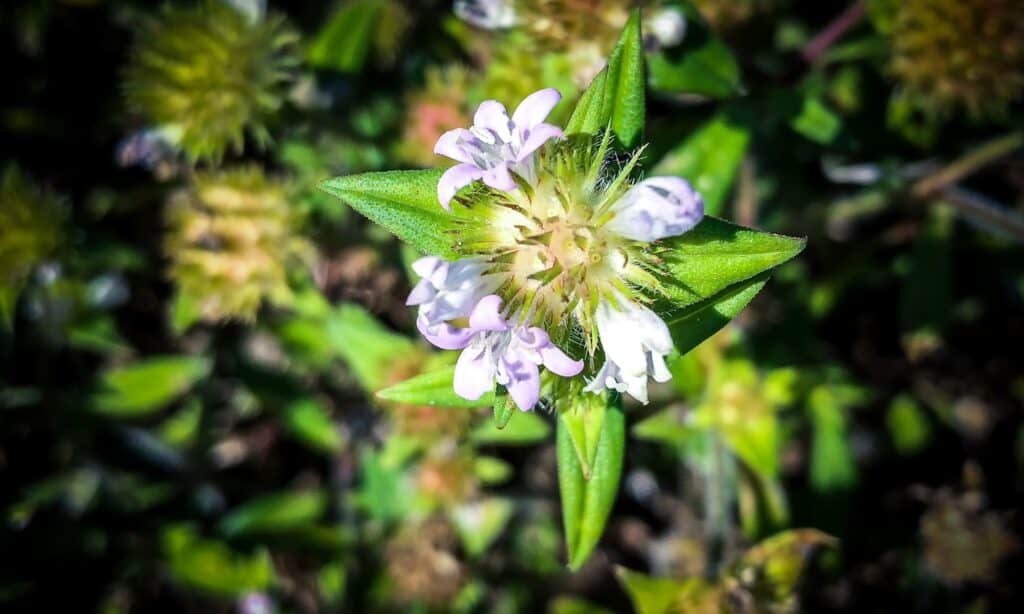
Alligator weed is also commonly referred to as pigweed.
©jaimie tuchman/Shutterstock.com
The aquatic alligator weed, often referred to as pigweed, is a plant native to South America that has since spread to the state. It was first discovered in the US when the plant was found growing in Alabama in 1897. Most believe that it was transferred to the region through ballast water from ships transporting goods.
This plant forms thick, tangled mats of vegetation across water. The resulting mass disrupts wildlife, reduces native species of plants, and negatively impacts fish, boaters, and more.
2. Water Hyacinth (Eichhornia crassipes)
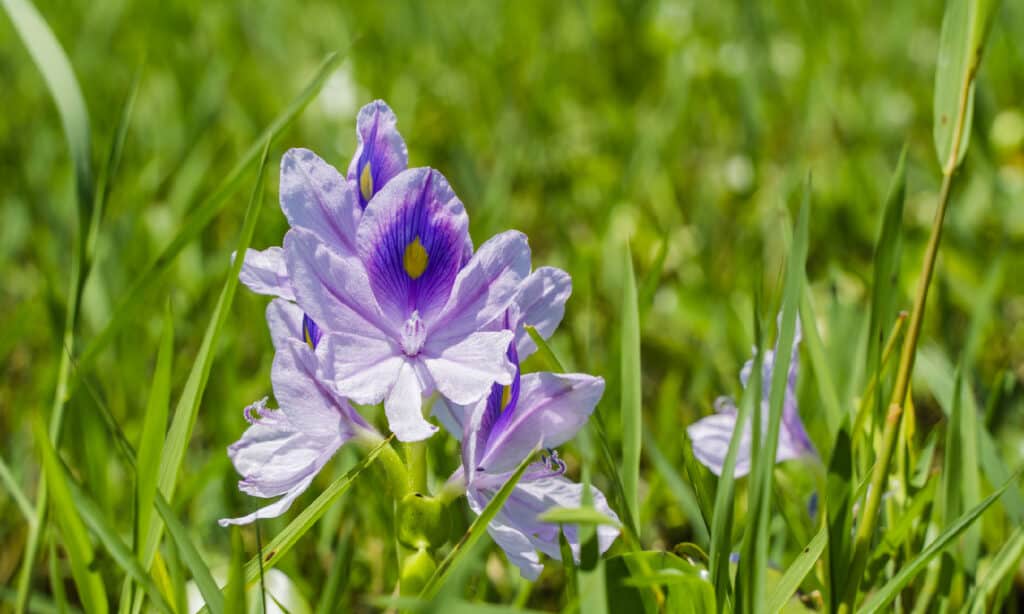
While water hyacinth is beautiful, it’s extremely harmful to the local habitat.
©iStock.com/Shai-Halud
Water hyacinth is a commonly known plant that is often seen all over the country. In California, this invasive plant has become a menace, particularly in the freshwater regions. Native to South America, this plant is sold in stores for its purple flowers.
Once escaped, as this plant has done across the state, it reproduces incredibly fast. Water hyacinth covers freshwater systems and costs millions of dollars each year to manage.
3. Hydrilla (Hydrilla verticillata)
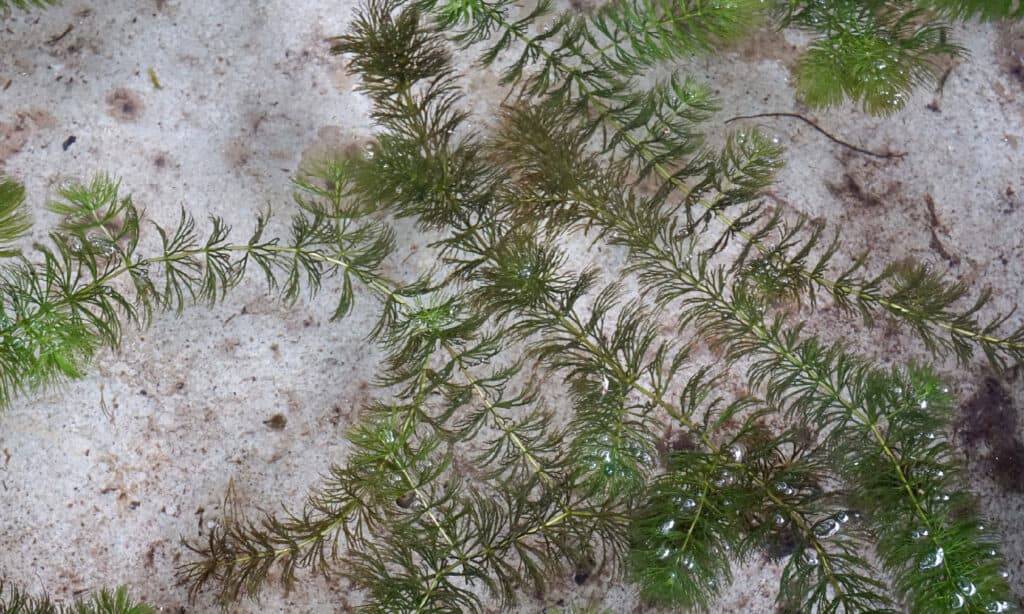
Hydrilla likely came to the United States from Asia in the 1950s.
©iStock.com/mansum008
Hydrilla, sometimes known as water thyme, is another aquatic plant. This plant is native to Asia, likely coming to the States around 1950 as a byproduct of the booming aquarium trade. Since then, it has made its way into freshwater systems and can be found all over the state, including in deserts.
Hydrilla forms dense mats of vegetation across the surface of the water, much like the others on this list. It clogs hydraulic structures, blocks water flow, and outcompetes native plant life.
4. South American Spongeplant (Limnobium laevigatum)
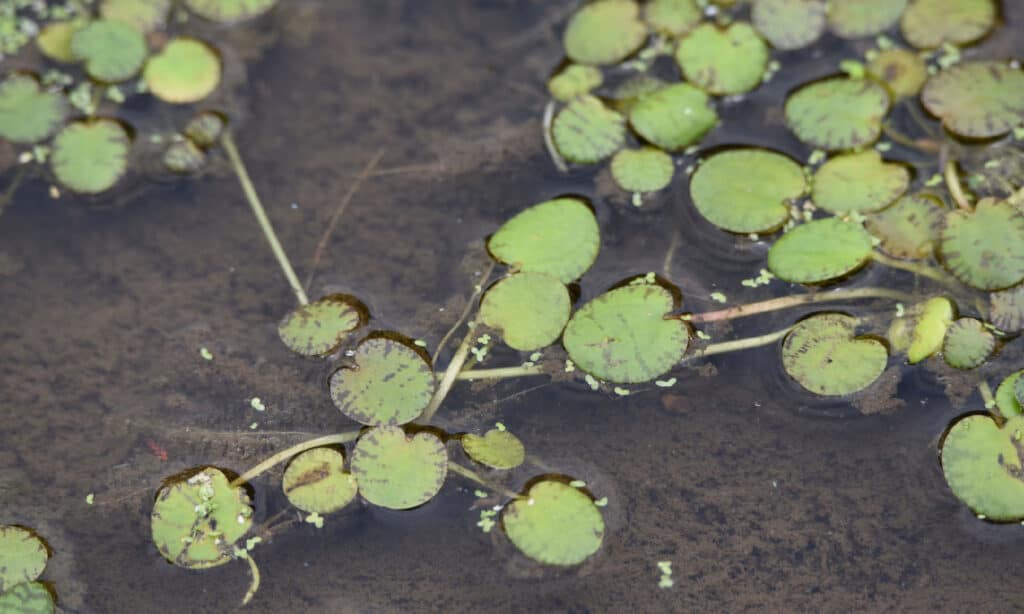
South American spongeplant looks like water lily but is much thicker.
©iStock.com/undefined undefined
The South American spongeplant is an aquatic plant that resembles a lily pad but with thicker leaves. Like the others, the spongeplant was introduced through aquariums but has escaped into freshwater ecosystems around the state.
Additionally, the spongeplant forms thick mats of vegetation, preventing the flow of water and impacting native wildlife.
5. Creeping Water Primrose (Ludwigia hexapetala)
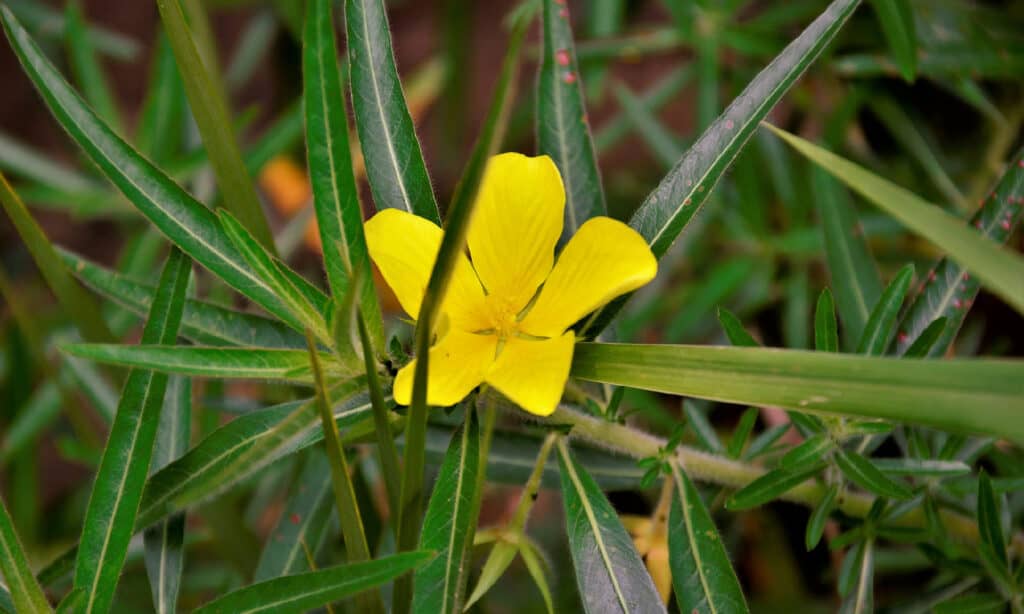
Creeping water primrose is a newer invasive plant but is rapidly growing.
©iStock.com/NancyAyumi
The creeping water primrose is a yellow-flowering plant that is native to the South American country of Uruguay. Like the others, it forms dense mats across the surface of the water and grows extremely fast. Although this plant is somewhat newer to the region (20 years), it is spreading fast.
The creeping water primrose chokes out other plants, harms wildlife (fish and others), and blocks sunlight from filtering down into the depths of the water.
6. Scarlet Wisteria (Sesbania punicea)
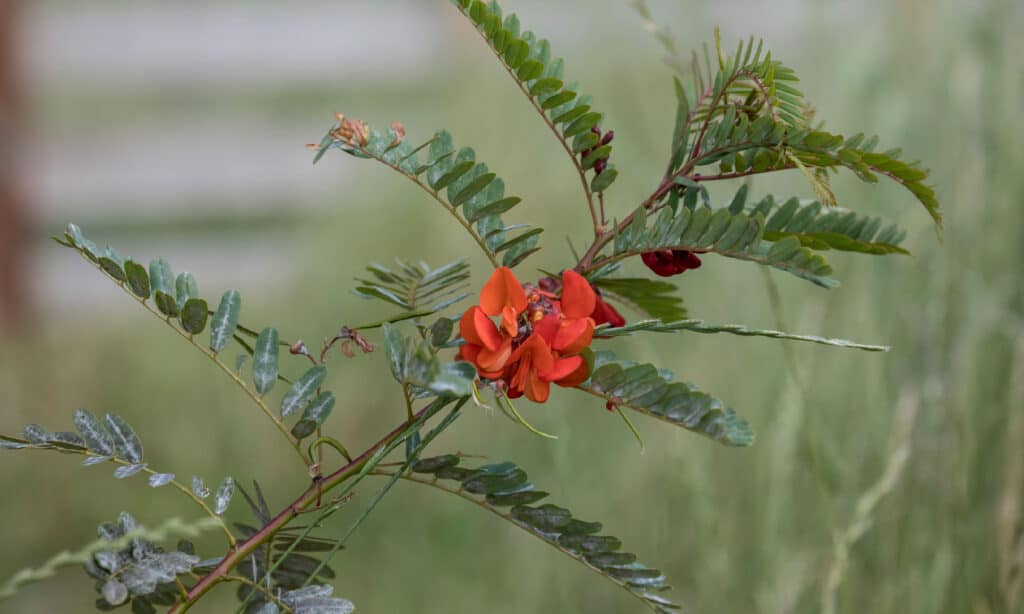
Scarlet wisteria is able to grow up to 13 feet tall on riverbanks.
©iStock.com/Nico Perez Photography
Scarlet wisteria is one of the non-aquatic plants we’ve included on the list. These plants are trees (or shrubs) that grow into dense thickets of vegetation near riverbanks. In some places, these shrubs can grow up to 13 feet tall.
Scarlet wisteria is mostly found in the Central Valley of California. It’s toxic to animals and erodes the riverbanks that it grows upon.
7. European Beachgrass (Ammophila arenaria)
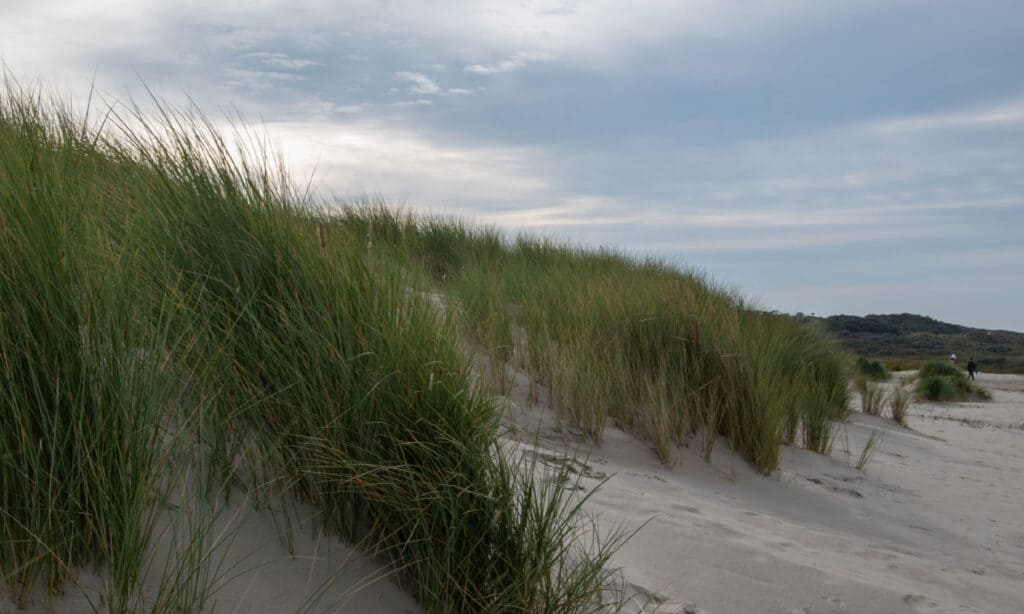
The denser leaves of European beachgrass (when compared to American beachgrass) drastically change beach landscapes.
©iStock.com/Edda Dupree
European beachgrass is a commonly seen plant that most would be familiar with. This grass is designed to live in coastal areas, primarily on beaches and sand dunes. California has its own native beachgrass (American dunegrass), but the European version grows differently. This invasive plant in California outcompetes its native counterpart.
With a denser profile, the European beachgrass holds onto sand and prevents it from blowing further onto interior dunes. This changes the established landscapes and ecosystems that have been in place for millions of years.
8. Giant Reed (Arundo donax)
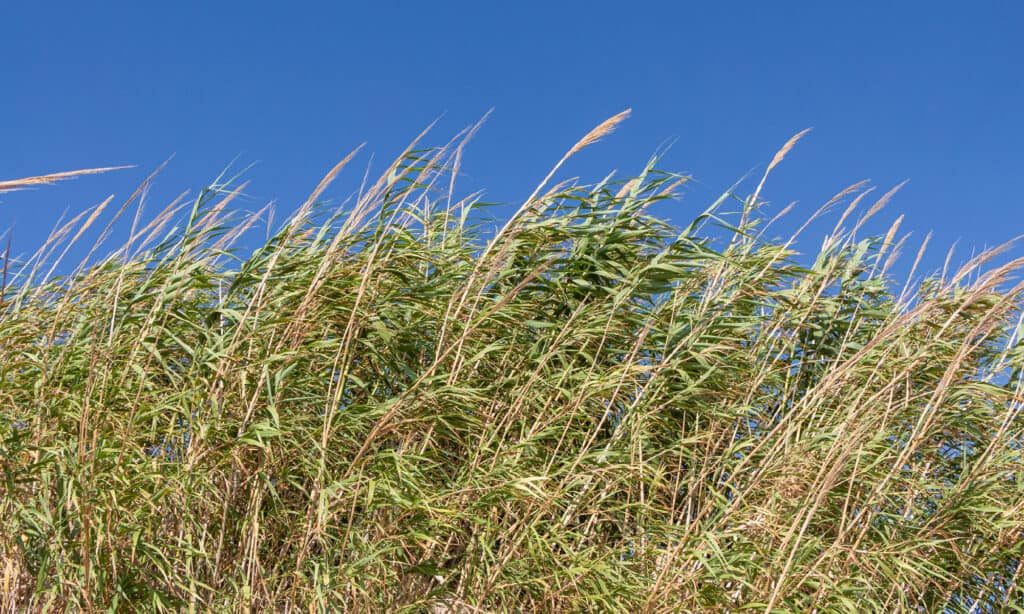
Giant reeds are similar to bamboo but are much better suited to the climate of California.
©iStock.com/Tatiana Kuklina
While they may look like bamboos, giant reeds aren’t the same. These plants were brought over with the intention of reducing erosion in the 1800s but soon spread. Like bamboos, giant reeds grow extremely fast but are especially suited to the California climate.
Giant reeds outcompete other plants and increase the likelihood of fires in the state, something nobody wants. They are currently in the river valley regions of central California but seem to be moving north.
9. Fennel (Foeniculum vulgare)
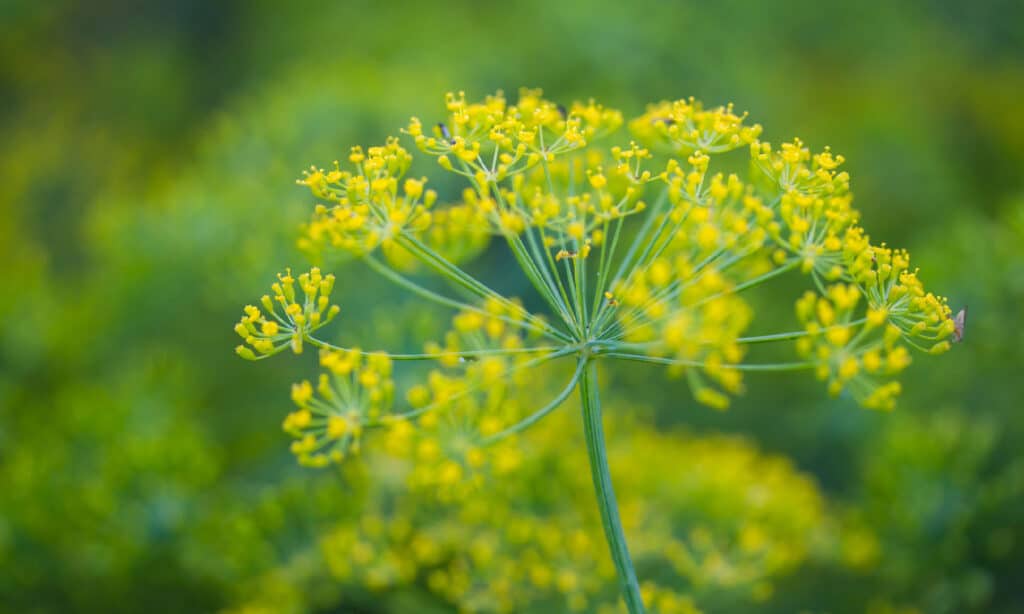
While some types of fennel are used in cooking, most of the types in California aren’t useful.
©iStock.com/AnnaDudek
Many people know fennel as a herb used in cooking, but it’s actually an invasive plant! Sadly, most of the varieties that are present as invasive species aren’t suitable for use in the kitchen. Fennel is present in the Bay Area, all the way to Camp Pendleton.
Certain variations of fennel are harmful and crowd many natural places in the state. Still, there are some varieties that are ok to have in moderation, as the local fauna relies on them. Sweet anise, for example, is the primary food of the anise swallowtail butterfly.
10. English Ivy (Hedera helix)

English ivy is one of the most invasive (and well-known) plants in North America.
©iStock.com/Marina Denisenko
English ivy is one of the more famous invasive plants that are present in the country. Quick-growing, hardy, and designed to choke the understory plants, English (and Algerian) ivy is a true menace to ecosystems all over California and the United States. A quick drive across most places in the southeast will show the effects of English ivy at scale in many places. With how fast it grows, this ivy is one of the most invasive plants in California.
What makes this ivy so dangerous is that it chokes the understory growth in forests, halting any other plant life from growing. This wreaks havoc on the forest ecosystems and ends with the ivy covering every square patch of light in the area.
A list of the 39 most invasive plants in California
While we didn’t cover every single plant, here is the complete list in case you want to research a bit more!
The 39 most invasive plant species in California:
- Alligatorweed
- Water hyacinth
- Hydrilla
- South American Spongeplant
- Creeping water primrose
- Parrotfeather
- Giant Salvinia
- Scarlet wisteria
- Smooth cordgrass
- Dense-flowered cordgrass
- Barb goatgrass
- European beachgrass
- Giant reed
- Sahara mustard
- Red brome
- Cheatgrass
- Highway iceplant
- Spotted knapweed
- Yellow starthistle
- Jubatagrass
- Scotch broom
- Cape ivy
- Brazilian egeria
- Purple veldt grass
- Fennel
- French broom
- English ivy
- Algerian ivy
- Perennial pepperweed
- Purple loosestrife
- Spike watermilfoil
- Scotch thistle
- Himalayan blackberry
- Spanish broom
- Medusahead
- Smallflower tamarisk
- Saltcedar
- Gorse
The photo featured at the top of this post is © iStock.com/Tatiana Kuklina
Thank you for reading! Have some feedback for us? Contact the AZ Animals editorial team.






